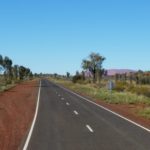
Our post today – with thanks – builds on an idea by Rebecca Brown, Manager Waste & Recycling at WALGA, who will be presenting at the March WA State Conference of the IPWEA. (details below).
The first stage to ‘doing different’ is to imagine!
Rebecca says: “Imagine a road that is made from completely sustainable products and when it wears out will be used as the input into another road or project. All the materials will circle through the system again and again. This is the aim of the circular economy and the direction our State is going. Instead of the current linear economy model – dig, use, dispose, in the Circular Economy approach no materials go to waste, everything is an input into another process.
That may seem like an unattainable goal, given WA currently generates about 2 tonnes of waste per household/year, but for civil works this aim is completely achievable. Using old roads for new, using innovative materials and sourcing high quality construction and demolition materials all provide us with a way to move towards achieving a circular economy in WA.”
At the forthcoming WA State Conference of the IPWEA, “Rebecca Brown, Manager Waste & Recycling at WALGA will provide a brief overview of the Circular Economy approach and how it fits into the State Government’s new direction, provided by an updated State Waste Strategy. Drawing on lessons from over 10 years of experience using a range of recycled materials, Colin Leek, an industry expert, will share his experience and present case studies of how to use these materials to close the loop. Dave Markham, Chair of the Waste Management Association C&D Working Group will explain the processes in place to ensure that high quality process.”
The second stage to ‘doing different’ is to extend.
In other words to see if we can apply what we have learned in one situation – for example, as in the above, for renewing existing roads – to totally new situations.
Can we imagine a situation where, instead of accruing more and more roads, we are able to decommission an existing road in favour of a more relevant route – return the road to arable, residential, or park lands – and re-utilise the road materials in the new location?
What would it take to make this idea reality?

I love this idea. From my perspective as Asset Manager for Rijkswaterstaat (AM agency for the Dutch ministry of Infrastructure and Water management) there is a lot to gain by adapting our (AM) strategies. For Rijkswaterstaat f.e., Water Safety was our core business. Yet our mission statement changed, now including “Sustainability”; including objectives regarding circular economy (among others). However, this aspect has not been translated yet throughout the organisation the same way Water Safety has. This sometimes results in biased AM decision making, as we are not able to compare the influence of AM activities on both mission goals. This could be solved by including a performance management system as part of the AM strategy which also comprises a (weighted) comparsion system. AM decommissioning plans (i.e. end-of-service – life plans) can be “scored” in this comparison system. This anchoring in the AM Strategy can be hard as you work with assets with design lifes of 100 – 200 years as is the case within Rijkswaterstaat. But this time is as good as any for changing the AM strategy, and to do things different- as for Rijkswaterstaat, Water Safety can not be seen seprately from climate change.